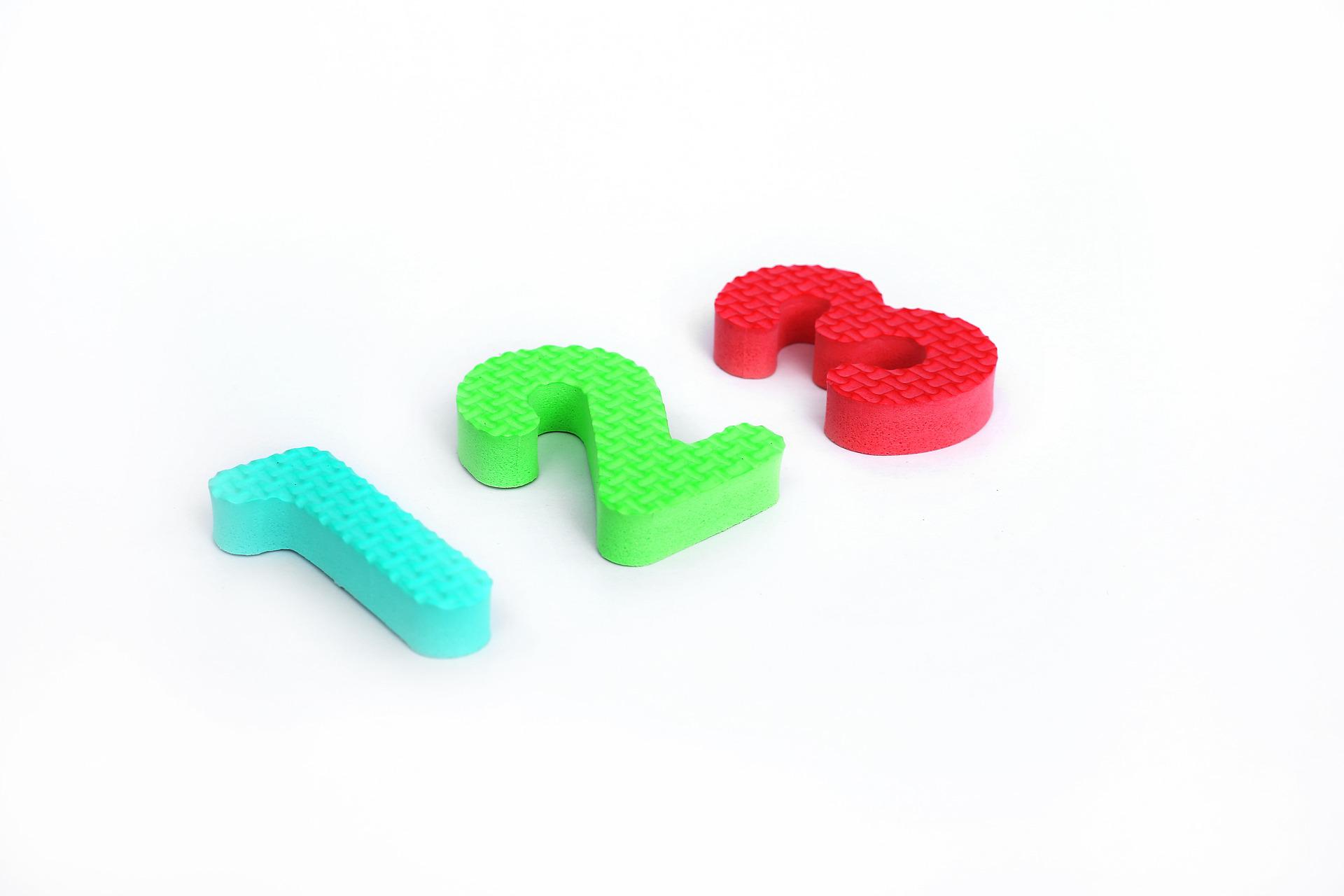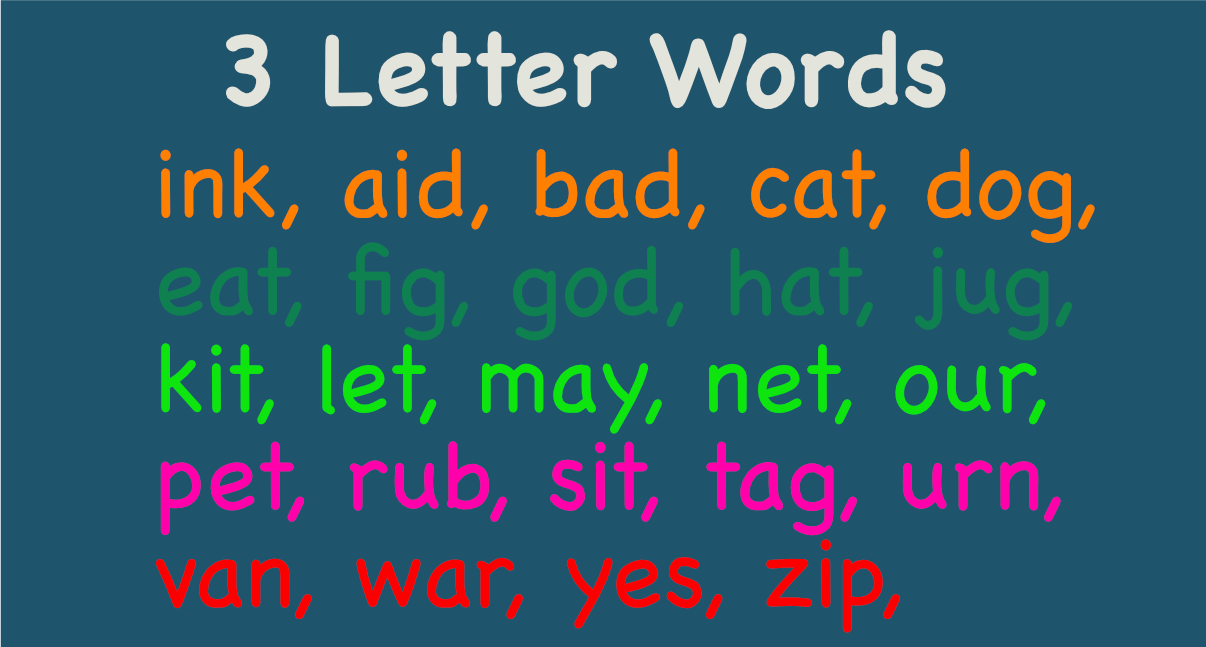
When teaching a child letters, one key question is what is the correct order for teaching letter recognition.
Fact is you actually don’t have to introduce the letters to your kids in an alphabetical order while teaching them the alphabet.
Start with High Frequency Letters
The key is to start by using high-frequency letters, such as the letters in their names.
They will have more opportunities to practice letter recognition because the letters in their names have more significance to them and are more familiar to them.
The above said, When teaching your child to recognize letters, it’s important to carefully plan the order in which you present each letter. For this, you may want to consult a reading program to help you make a plan. During the initial stages, it’s helpful to teach the alphabet names first, and then the letter sounds.
Contents
- 1 Teaching Letter Names Before Their Sounds
- 2 Patience Is Importance
- 3 Letter Name Bingo
- 4 The Alphabet Song
- 5 Using A Uniform Shape
- 6 Using Object Labels
- 7 Build Animals Using Letters
- 8 Using A Synthetic Phonics Program
- 9 Using A Letter-Of-The-Day Program
- 10 Flashcards
- 11 Repeated Exposure to the Alphabet Is Central
- 12 Final Thoughts
Teaching Letter Names Before Their Sounds
A growing body of research has demonstrated the reciprocal relationship between letter name and sound knowledge. Children who are introduced to the names of letters are more likely to be able to deduce their sound from the name.
However, the letter name isn’t the only important aspect of letter learning. Students should also be introduced to the sounds of each letter in order to learn the letter names.
The letter names of many letters may be similar, making it difficult for beginning readers to distinguish between them. In the case of g, for example, a short g sounds like a long k. Likewise, the letter k makes a k sound when the voice is not present. Other similar sounds include t, d, f, and p.
Patience Is Importance
To teach children letter names, parents should be patient. Although some children may be able to grasp the concept faster than others, it is important not to get frustrated. Excessive frustration will only lead to less fruitful learning sessions. It is also important to keep the practice sessions short.
A few minutes will do for younger children, while longer sessions will work for older children. The goal is to ensure that students can associate the letter names with their sound within three seconds.
In addition to teaching the names of letters, children need to be exposed to them in print in a language rich environment. The classroom should also be a literacy-rich environment.
Moreover, teachers should be willing to try new approaches to help children learn the alphabet. These include using songs, videos, and pointing out objects to help them learn the letters.
Letter Name Bingo
A fun way to teach letter names is to play Letter Name Bingo with the child. You can download a free template and play with mystery letters or family names. Alternatively, you can write the letter name on paper or chalk. Either way, the child is sure to learn the names of letters.
The Alphabet Song
In the early years, many parents teach their children the alphabet by singing the Alphabet Song. Many parents believe that knowing the names of letters will help them become better readers. As such, they search for preschools that emphasize letter name recognition rather than focusing on the sounds.
Using A Uniform Shape
Children learning to read need to differentiate between different letter shapes. They need to understand the difference between tall and short letters and straight and curved lines. It is also important to start with letters that have a lot of meaning for them, such as letters in their own names. Then, they can progress to other letter types.
Using Object Labels
Another way to help students learn letter recognition is to label objects. Label everything your child comes in contact with in the classroom. This can include desks, crayon boxes, and cubbies. Make the environment as literacy-rich as possible. This will allow your child to identify the letters more easily.
Another effective way to teach letter recognition is to create a story around the letters. It is also a great way to develop fine motor skills by copying the letters. Using an online letter formation resource will provide a fun and engaging way for your child to learn letter recognition while developing fine motor skills.
Build Animals Using Letters
Another way to teach letter recognition is by building an animal from the letters. There are many animal letter craft kits available online. Totally Tots has a great collection of letter ideas and Red Ted has a fun collection of hand print letter ideas. For a more hands-on approach, you can have your students make letter shapes out of animal prints.
Learning the alphabet is not easy. Oftentimes children will not retain all the information. They might not even know the name of a letter. In order to build letter recognition skills, children must be exposed to the letters multiple times. Engaging the various senses can make the process easier. This way, children are more likely to learn how to read and spell the letters.
Using A Synthetic Phonics Program
Using a synthetic phonics (Synthetic Phonics) program can help your child learn how to read and spell. The first step in the process is to introduce the child to the letter sounds that make up the words. By focusing on these sounds, a child will be more likely to learn to read.
Synthetic phonics is an evidence-based systematic approach to teaching reading. It involves a gradual introduction of the letter shapes and sounds that make up words.
There are 44 speech sounds that can be combined to form words. Each letter represents one or more of these sounds. Each letter has a phoneme and grapheme correspondence that enables students to recognize and blend these letters.
Synthetic phonics programs encourage children to pronounce individual sounds of words and blend these sounds to form words. This method can improve a child’s reading skills and increase their confidence in their ability to read and write.
It also improves reading fluency by increasing students’ ability to read with accuracy, speed, and expression. In addition to being easy to use, a synthetic phonics program can be used on any device, including iPads and tablets. Because of its effectiveness in teaching reading, it is the main method used in many English-speaking countries.
A synthetic phonics program is a good option if your child needs a more comprehensive learning system. Synthetic phonics programs help children develop the decoding system needed to read words correctly. However, children with dyslexia should not use a synthetic phonics program.
Most reading programs are not synthetic phonics-based. However, they can be modified to be multi-sensory. These can be adapted for different learning styles. They can also be made more systematic to help kids with learning disabilities learn to read. They should also include a reading strategy that focuses on the child’s strengths and weaknesses.
While a synthetic phonics program is easier to catch on to, it can lead to blending problems in some children. If your child has a problem with blending, you may want to consider analytic phonics. This approach is more difficult to master but has more benefits.
Using A Letter-Of-The-Day Program
Letter-of-the-day programs are great for teaching children how to recognize letters. These programs are designed to help children identify all the different letters in the alphabet. Often, a letter will be associated with a particular word or picture. The program can be fun and engaging for children.
Many programs are designed to help children develop letter recognition by using flashcards that reinforce the letters. This approach is useful in many ways. One method involves introducing a letter as a logo, which anchors the child’s memory of the letter.
Flashcards
Other methods include making flashcards that feature an upper and lower-case letter, along with a picture association. The backside of each card also includes information on how to teach the letter. Some flashcards even include a star rating, so that children can see how difficult the letter is for them.
A child can also make their own letter recognition cards. This method is especially useful for young children who are not yet able to recognize the shapes of the letters. For example, a student might have difficulty with the letter “O”, which is often taught as a circle.
Likewise, children may not understand that other letters are curved, have straight lines, or contain dashes. Using dot markers or round stickers to help break letters down can help children recognize and write the letter.
Repeated Exposure to the Alphabet Is Central
Letter recognition skills are developed through repeated exposure to the alphabet. This will help young children prepare for reading. Children spend most of their day touching and exploring their world. Therefore, it is easier to teach a child letter sounds by engaging the various senses.
Using a letter-of-the day program will help your child develop the habit of memorizing letters. Children should be exposed to all the letters in the alphabet every day. For example, the door handle of a playground will be the letter “P.” You can also show your child the letters in books by displaying them on the pages.
Children must understand that letters are meant to be grouped together to make words. A classroom center could have alphabet magnet tiles and encourage kids to order the letters. They can also use these letters to label objects and draw pictures.
Final Thoughts
The first step in teaching a child how to read is to teach the letter names. This is very important. It helps the child develop a sound for each letter, and it helps him understand the relationship between the sounds and the printed text. The knowledge of these letter names will make it easier for him to learn how to read the words.



